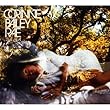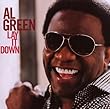 Angelique Kidjo listened to the music of Bella Bellow, James Brown, Aretha Franklin, Marvin Gaye and other Motown artists, Miriam Makeba, Curtis Mayfield, and Otis Redding. She listened to all kinds of music, in different languages. Full of curiosity and enthusiasm, Angelique Kidjo was a girl whose singing was enjoyed by her community, but as she became a young woman that attitude changed—because women entertainers were viewed with moral skepticism—and Kidjo was criticized and taunted, but with her family’s support she continued to sing.
Angelique Kidjo listened to the music of Bella Bellow, James Brown, Aretha Franklin, Marvin Gaye and other Motown artists, Miriam Makeba, Curtis Mayfield, and Otis Redding. She listened to all kinds of music, in different languages. Full of curiosity and enthusiasm, Angelique Kidjo was a girl whose singing was enjoyed by her community, but as she became a young woman that attitude changed—because women entertainers were viewed with moral skepticism—and Kidjo was criticized and taunted, but with her family’s support she continued to sing.
Category: Music reviews
I Would Like to Call It Beauty: Corinne Bailey Rae’s The Sea
 I had not known or remembered how talented Corinne Bailey Rae is; more than a unique singer—her voice can seemed to be held in the air, suspended by contemplation, savoring mood and sense—she plays several instruments, including piano and guitar (and glockenspiel, glass organ, autoharp). The first song on The Sea does not seem to end the silence that preceded it, but to extend that silence and then to slowly give it details, with Bailey Rae’s delicate voice and her piano and guitar.
I had not known or remembered how talented Corinne Bailey Rae is; more than a unique singer—her voice can seemed to be held in the air, suspended by contemplation, savoring mood and sense—she plays several instruments, including piano and guitar (and glockenspiel, glass organ, autoharp). The first song on The Sea does not seem to end the silence that preceded it, but to extend that silence and then to slowly give it details, with Bailey Rae’s delicate voice and her piano and guitar.
Masterpiece; or, The Intimate Art of Song: Love is the Answer by Barbra Streisand
 It is in Streisand’s inflections—her diction, pacing, and tone—that one can identify some of Streisand’s talent, as she remembers a love in the composition “In the Wee Small Hours of the Morning,” which Frank Sinatra sang (it was written by Bob Hilliard and David Mann, and here has a piano solo by Diana Krall, who serves as Streisand’s producer for Love is the Answer). Streisand’s inflections, like that of Sinatra, return dignity and understanding to human experience.
It is in Streisand’s inflections—her diction, pacing, and tone—that one can identify some of Streisand’s talent, as she remembers a love in the composition “In the Wee Small Hours of the Morning,” which Frank Sinatra sang (it was written by Bob Hilliard and David Mann, and here has a piano solo by Diana Krall, who serves as Streisand’s producer for Love is the Answer). Streisand’s inflections, like that of Sinatra, return dignity and understanding to human experience.
Idol Rising (Toward Individuality): The Element of Freedom by Alicia Keys, with her Unplugged collection
 (Yelling and screaming are what people who are incapable of eloquence or self-control regularly do; and artists have imitated that to indicate genuine feeling. Is that honesty, invention, or a crude, pandering sentimentality; or, is it, possibly, all of these? It is not art or craft as each has been long, traditionally understood: art has been about evolution, improvement, refinement. It is an irony that the twentieth-century modern era has used the primitive, the raw, the stupid, and the ugly as invigorating, persuasive powers; and many people are still convinced by that kind of power.)
(Yelling and screaming are what people who are incapable of eloquence or self-control regularly do; and artists have imitated that to indicate genuine feeling. Is that honesty, invention, or a crude, pandering sentimentality; or, is it, possibly, all of these? It is not art or craft as each has been long, traditionally understood: art has been about evolution, improvement, refinement. It is an irony that the twentieth-century modern era has used the primitive, the raw, the stupid, and the ugly as invigorating, persuasive powers; and many people are still convinced by that kind of power.)
Goddess, Artist, Woman: Mariah Carey’s Memoirs of an Imperfect Angel and #1s
 Hip-hop promotes aggressive attitudes and beats and rhetorical and rhyming speech, and the biracial Mariah Carey’s persona—visually wearing the short, tight clothes of a youthful fantasy; and vocally using the intonation of a rough girl—sometimes seems that of the tender-tough moll of a money-making neighborhood thug rather than the eloquent, fashion couture-wearing incarnation of a first-rate international performer, for whom sophistication of various kinds is an inevitability.
Hip-hop promotes aggressive attitudes and beats and rhetorical and rhyming speech, and the biracial Mariah Carey’s persona—visually wearing the short, tight clothes of a youthful fantasy; and vocally using the intonation of a rough girl—sometimes seems that of the tender-tough moll of a money-making neighborhood thug rather than the eloquent, fashion couture-wearing incarnation of a first-rate international performer, for whom sophistication of various kinds is an inevitability.
The Romance of the Masculine: Maxwell’s BLACKsummers’ Night and Unplugged
 On the nine-song set of songs BLACKsummers’ Night by Maxwell, in the fast-paced song “Help Somebody,” Maxwell takes a hard look at self and the need to be a better, more generous and peaceful person; and in a lyric that moves into more speculative territory, he declares, “If you see the future, ask it if I’m there.” One imagines Maxwell will be part of the future as he has been part of the past. I hope that.
On the nine-song set of songs BLACKsummers’ Night by Maxwell, in the fast-paced song “Help Somebody,” Maxwell takes a hard look at self and the need to be a better, more generous and peaceful person; and in a lyric that moves into more speculative territory, he declares, “If you see the future, ask it if I’m there.” One imagines Maxwell will be part of the future as he has been part of the past. I hope that.
Heritage and Passion: Al Green’s Lay It Down
 It is not always easy to predict the artists who will be seen as important to an art form or culture: it takes years for us to live with art, years for the art to pass the rigors of personal mood and public questions, leaving some artists forgotten and others raised up. Whether singing of love and sex or spirituality, Al Green is important.
It is not always easy to predict the artists who will be seen as important to an art form or culture: it takes years for us to live with art, years for the art to pass the rigors of personal mood and public questions, leaving some artists forgotten and others raised up. Whether singing of love and sex or spirituality, Al Green is important.
That Voice, Those Words: Bob Dylan, Time Out of Mind
 The rhythm is more prominent, more enthusiastic, with swing and twang, in Time Out of Mind’s “Dirt Road Blues,” than on “Love Sick”; and “Dirt Road Blues” is a song I can imagine being sung at a country fair. There is scene-setting and the comparison of different times—late night is mentioned, as is the changing pace of different days—in Dylan’s draggy voice, a voice that seems the representation of what he feels.
The rhythm is more prominent, more enthusiastic, with swing and twang, in Time Out of Mind’s “Dirt Road Blues,” than on “Love Sick”; and “Dirt Road Blues” is a song I can imagine being sung at a country fair. There is scene-setting and the comparison of different times—late night is mentioned, as is the changing pace of different days—in Dylan’s draggy voice, a voice that seems the representation of what he feels.
Soul Man, Sex Symbol: Marc Broussard, Keep Coming Back
 The creative work of Marc Broussard has drawn many comparisons to rhythm-and-blues music made from 1960s until now, but Broussard’s artistry seems influenced by that music, and in conversation with that music, rather than exploitative; and Broussard’s album Keep Coming Back has a richer sound than most of the other people, such as Duffy, Sharon Jones, Raphael Saadiq, Ryan Shaw, and Amy Winehouse, now mining the same vein.
The creative work of Marc Broussard has drawn many comparisons to rhythm-and-blues music made from 1960s until now, but Broussard’s artistry seems influenced by that music, and in conversation with that music, rather than exploitative; and Broussard’s album Keep Coming Back has a richer sound than most of the other people, such as Duffy, Sharon Jones, Raphael Saadiq, Ryan Shaw, and Amy Winehouse, now mining the same vein.
PURE MUSIC (I Want to Talk About You): the work of Christian McBride and Inside Straight (Kind of Brown), the Steve Kuhn Trio (Mostly Coltrane), and Roman Street (Amore)
 Gorgeous horn-playing echoes the blues in “Spiritual,” a contemplation of the spirit that does not deny the sensual (however, the tumult near the end could be wailing—the naked complaint, the shameless call for divine help); and Steve Kuhn’s “Trance,” which completes the album, is a quiet piano piece, yet able to evoke dimensions.
Gorgeous horn-playing echoes the blues in “Spiritual,” a contemplation of the spirit that does not deny the sensual (however, the tumult near the end could be wailing—the naked complaint, the shameless call for divine help); and Steve Kuhn’s “Trance,” which completes the album, is a quiet piano piece, yet able to evoke dimensions.